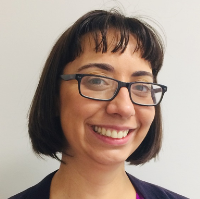Fabiana Barticioti is Digital Assets Manager at LSE Library
The DPC launched their Rapid Assessment Model (RAM) to members in September. To keep the momentum going I completed the assessment, in consultation with other colleagues, and submitted it to DPC immediately. I strongly recommend all membership to do it and help DPC to benchmark the DP community efforts.
Why DPC-RAM and why now?
The LSE Digital Library team’s responsibilities are to create, to manage and to disseminate digital content through a few existing platforms. Digital Preservation activities are an aspect of our work and it competes with provision of access in terms of time and resourcing. It is fair to say that provision of access took priority in the last decade. In recent years the team and the Library senior management decided to rebalance this by creating a Digital Assets Manager role, implementing a new Digital Asset Management System or DAMS (Arkivum’s Perpetua), and refining workflows to accompany these changes.
After a year in post and developing groundworks it felt it is the right time to be able to express where we are at with our DP journey. I had looked at other maturity models available, but it did not feel they were applicable to our context. The launch of the DPC-RAM was timely, and I must say that being designed to be relatively quick and easy, it was attractive too!
The scope
For the purpose of this RAM I included the LSE Library digitised collections only and no other areas of interest including born-digital material. Our digitised collections are fast reaching 30TB and contains the usual digital object suspects: from images, audio, video to some documentary formats. In terms of file formats, we are very conservative: tif, jpeg, MOV, mp3, WAV and mostly recently Auto and text from OCR PDF.
Most of these collections are publicly available in a number of online platforms: LSE Digital Library, LSE Library Flickr account, Charles Booth’s London.
Current capabilities
We scored 6 out of 11 capabilities at Basic level and the remaining 5 at Managed level.
With organizational capabilities we scored a solid Managed level in Legal Basis, Continuous Improvement and Community. On the other hand, we scored Basic level in Organisational viability, Policy and Strategy and IT capabilities.
In brief our senior management is committed to DP: has recently invested in a new DAMS and has enabled the Digital Library team’s restructure which reflects responsibilities with DP activities. These activities mark the beginning of a delivery phase, but as the work progress and so too our readers’ expectations, I foresee further development and a need for additional investment in the near future.
With Service Capabilities we scored Managed level, and also with Bitstream and Content Preservation. However we are not there yet with some capabilities: Acquisition, Transfer and Ingest; Metadata; and Discovery and Access. As mentioned before the Digital Library team has been doing the groundwork in creating workflows that will cope with ingesting datasets and associated metadata al large scale. The ingest should start at any time soon and, only when all our datasets are cosied up in our DAMS, will we be able to say these capabilities scores at Managed level.
The target levels
I initially indicated most of our target level is for “Managed”, with the notion that we will be getting there with some efforts in the upcoming year. On reading this I realised that I was indicating the direction of travel, but it looks like playing safe. LSE Library is proud of its service excellence and managing digitised collection should be no different. Aspiring to reach the top level may sound very ambitious right now but shouldn’t we dream to reach higher? After some thought I targeted these capabilities to Optimised level.
Why I strongly recommend members (and non-members) to take part?
First of all, taking a step back from the daily operations and assessing the context in which I am working was a sanity exercise. It turned out to be a great opportunity to celebrate past work and express future needs. Showing aspirations is great but senior management wants to see workplans. DPC-RAM’s capabilities are assisting us to identify were our immediate focus is and, at the same time helping us to create a roadmap for DP excellence.
It would be interesting to know where we are in relation with peer institutions and identify community direction of travel.
